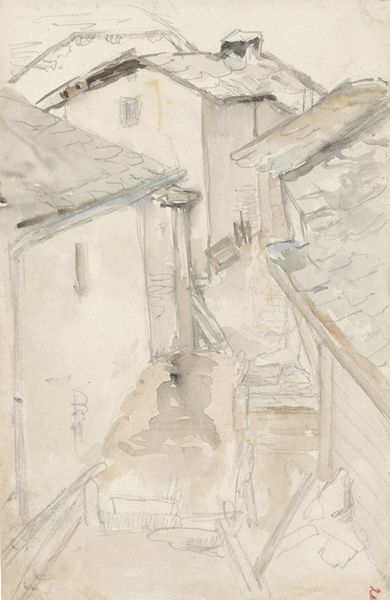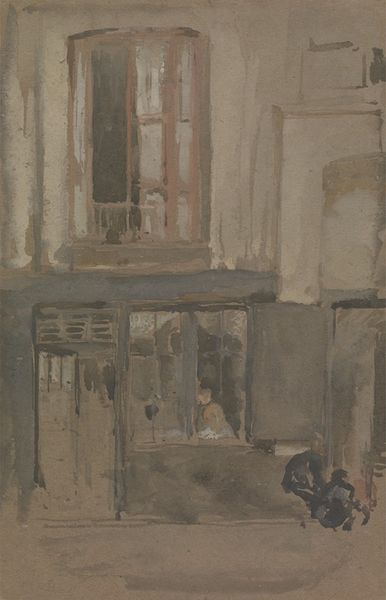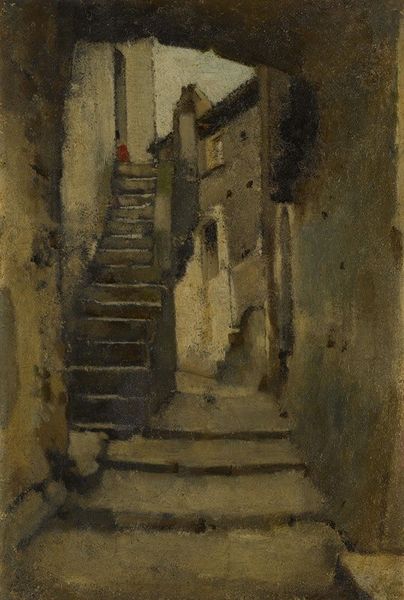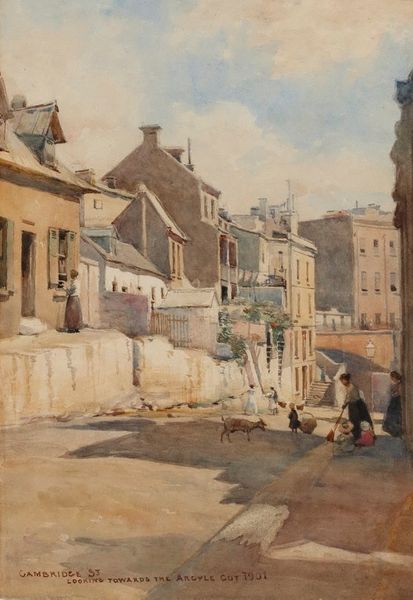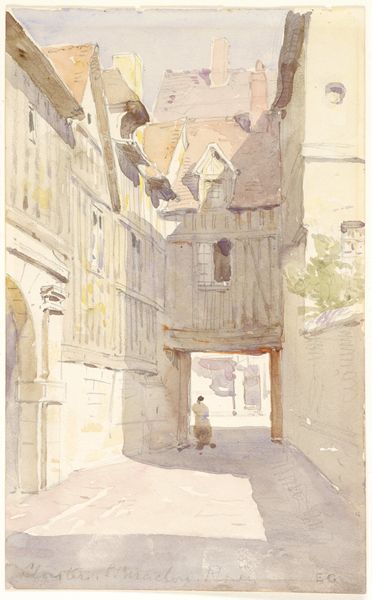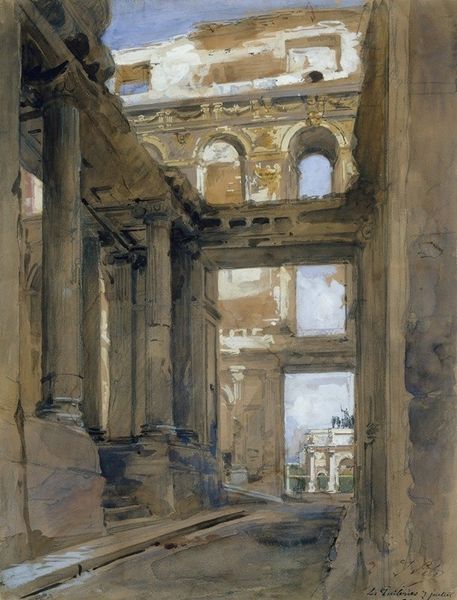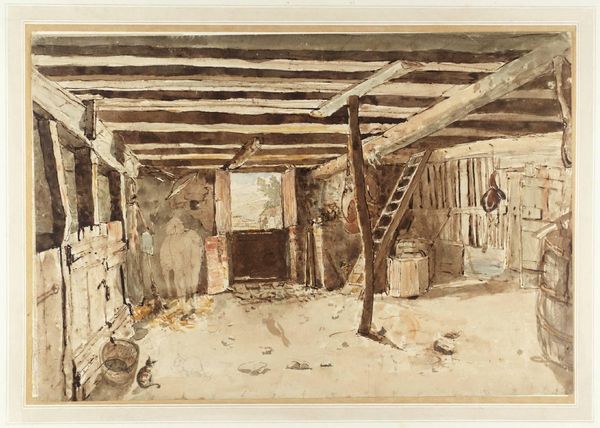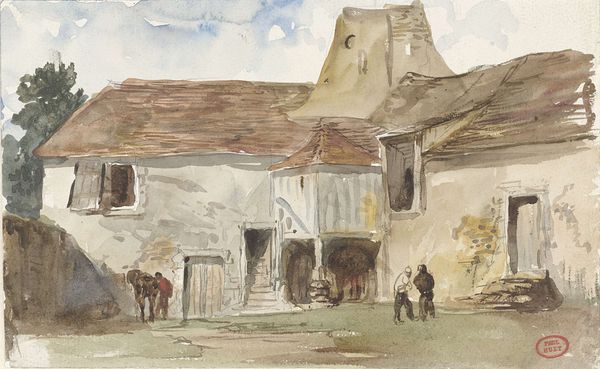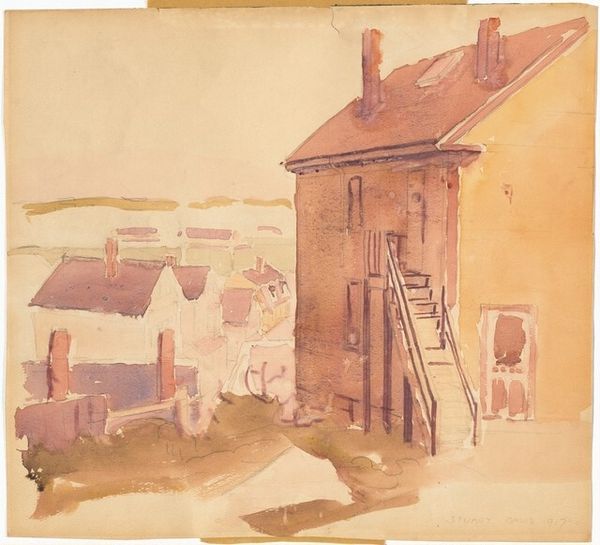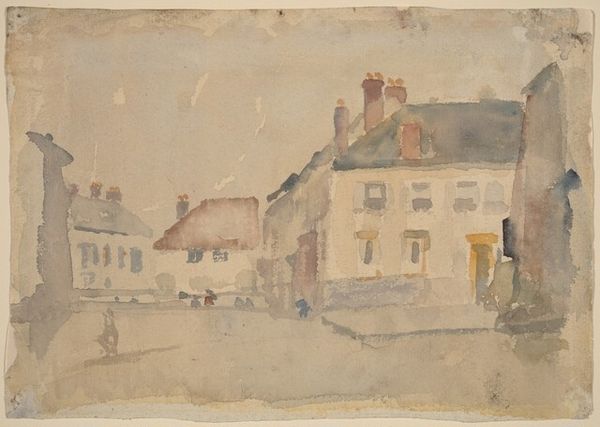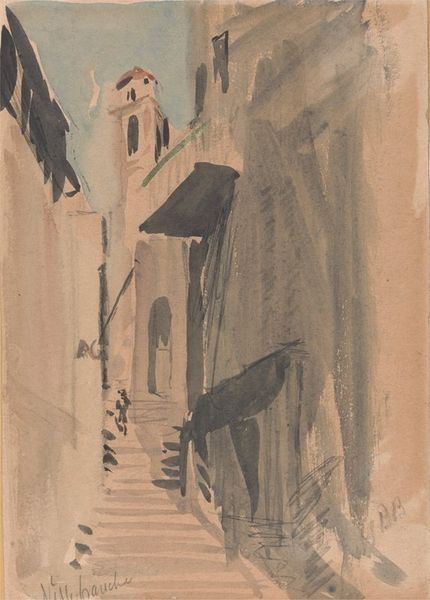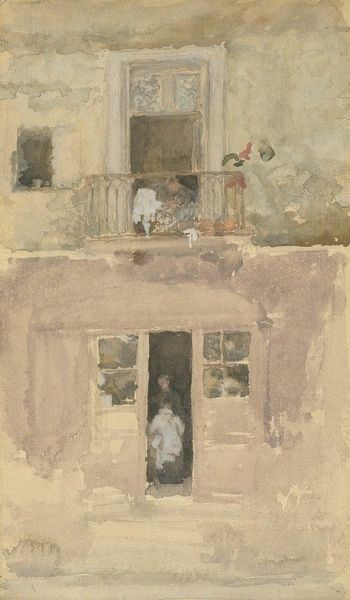
Copyright: Public domain
Editor: So, this is Julian Ashton’s “Back of old house, Clyde St Miller's Point” created in 1895 using watercolor. It strikes me as rather…ordinary. The muted tones and everyday scene lack a certain… drama, I guess. What am I missing? What do you see in it? Curator: Ordinary? Perhaps. But isn't there beauty in the everyday, in the quiet corners of life? For me, this painting whispers stories of resilience and a uniquely Sydney history. Ashton, he’s not aiming for grandeur, but for the *feel* of a place. Think about the date, 1895. Sydney was changing rapidly. What does this slice of a working-class neighborhood tell you? Editor: I guess… a certain grittiness. It’s definitely not the Opera House! But, even though it feels candid, there are people placed throughout the scene. It's still staged in some ways, right? Curator: Staged? I’d say arranged. See how the figures lead your eye? That barrel and child, the woman near the steps. Ashton uses the light to emphasize texture; that old building isn’t smooth. There’s almost a musical rhythm to the composition. Do you see that interplay between light and shadow that softens any harshness in reality? Editor: I see what you mean about the rhythm, now that you mention it. It is like the artist captured a certain...atmosphere of the time and location? The human and manmade structures come together. Curator: Exactly! He offers a glimpse into a moment – fleeting, like a memory. It's the poet in him showing you something he sees: not perfection, but genuine living. Something authentic. Editor: That’s definitely something I wouldn’t have picked up on initially. Now it does seem almost poignant, in a way. Curator: Yes. Isn't it marvelous how a change in perspective can reveal something hidden in plain sight?
Comments
No comments
Be the first to comment and join the conversation on the ultimate creative platform.
